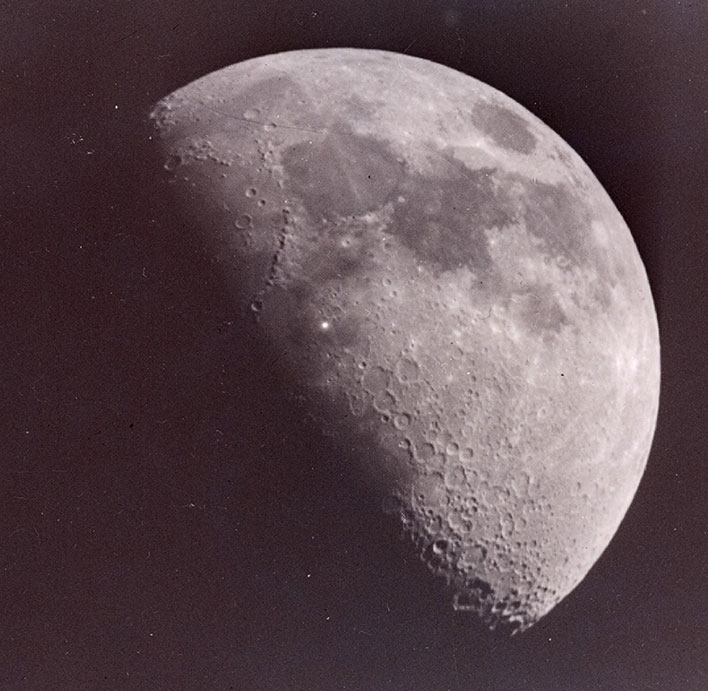The Moon Is Flashing Us, And Scientists Are Using AI To Figure Out Why
Scientists and casual stargazers alike have been trying for thousands of years to identity the flashes of light that come from the moon. One scientist believes that they are close to pinning down the origins of the phenomenon. Dr. Hakan Kayal from the University of Würzburg in Bavaria will use telescopes and AI to explain the flashes of light on the moon. Dr. Kayal has spent several years studying this lunar mystery as well as other topics such as nano satellites.
These light sources are referred to as transient lunar phenomenon or TLP. Dr. Kayal and his team have built a custom telescope in Spain that is over 62 miles (100 km) from the nearest sources of light pollution. Kayal’s system consists of two low-budget telescopes with cameras that are connected to two separate computers.

The computers will use artificial intelligence (AI) to identify sources of light. The scientists hope to train the AI to differentiate between various sources of light and distractions. Their goal is to ultimately detect TLP and be able to determine its causes.
Human beings have spotted lunar flashes for millennia, but the first confirmed observation of TLP occurred in 1958 by Russian astronomers. It has since been determined that flashes happen several times a week and are red or pink in color. The TLP often leave behind dark spots on the moon. Unfortunately, it can be difficult to differentiate between TLP and other light flashes.

Kayal’s study is no mere passion project. NASA hopes to land the first female and next male astronaut on the moon by 2024. At the moment, we do not know whether the TLP are signs of something dangerous. Some scientists believe that the TLP are the result of meteorite impacts. Others argue that the light is caused by gas released from moonquakes. At the end of the day, the cause still eludes us. We need to be as well-informed as possible before attempting to land human beings on the moon again.
These types of studies are also important, since private astronauts will soon be orbiting around the moon. SpaceX plans to launch Japanese entrepreneur Yusaku Maezawa and a few artists around the moon in 2023. Our need for greater safety measures will increase as space tourism becomes more popular. Let’s hope that Dr. Kayal’s team will find some answers.
These light sources are referred to as transient lunar phenomenon or TLP. Dr. Kayal and his team have built a custom telescope in Spain that is over 62 miles (100 km) from the nearest sources of light pollution. Kayal’s system consists of two low-budget telescopes with cameras that are connected to two separate computers.

Photo of what is now believed to be TLP, captured in 1953, Image from Columbia University
The computers will use artificial intelligence (AI) to identify sources of light. The scientists hope to train the AI to differentiate between various sources of light and distractions. Their goal is to ultimately detect TLP and be able to determine its causes.
Human beings have spotted lunar flashes for millennia, but the first confirmed observation of TLP occurred in 1958 by Russian astronomers. It has since been determined that flashes happen several times a week and are red or pink in color. The TLP often leave behind dark spots on the moon. Unfortunately, it can be difficult to differentiate between TLP and other light flashes.

Lunar crater, Image from NASA
These types of studies are also important, since private astronauts will soon be orbiting around the moon. SpaceX plans to launch Japanese entrepreneur Yusaku Maezawa and a few artists around the moon in 2023. Our need for greater safety measures will increase as space tourism becomes more popular. Let’s hope that Dr. Kayal’s team will find some answers.

